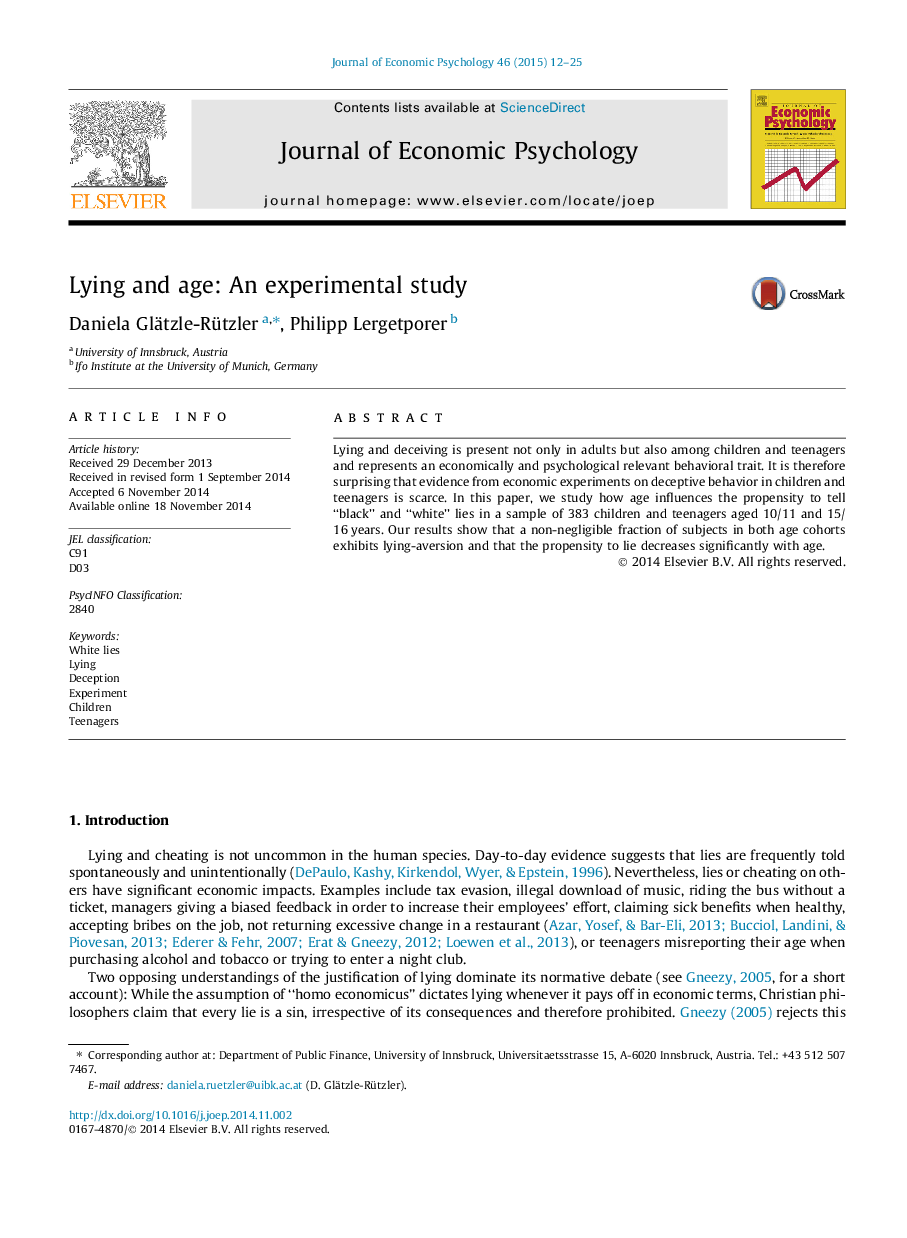| Article ID | Journal | Published Year | Pages | File Type |
|---|---|---|---|---|
| 884893 | Journal of Economic Psychology | 2015 | 14 Pages |
•Lying frequencies decrease significantly with age (from 10/11 years to 16/17 years).•Considerable fraction of subjects in both age cohorts exhibits lying-aversion.•Decision to lie depends on the payoff consequences for oneself and the partner.•Subjects lie less in order to decrease disadvantageous inequality.
Lying and deceiving is present not only in adults but also among children and teenagers and represents an economically and psychological relevant behavioral trait. It is therefore surprising that evidence from economic experiments on deceptive behavior in children and teenagers is scarce. In this paper, we study how age influences the propensity to tell “black” and “white” lies in a sample of 383 children and teenagers aged 10/11 and 15/16 years. Our results show that a non-negligible fraction of subjects in both age cohorts exhibits lying-aversion and that the propensity to lie decreases significantly with age.
